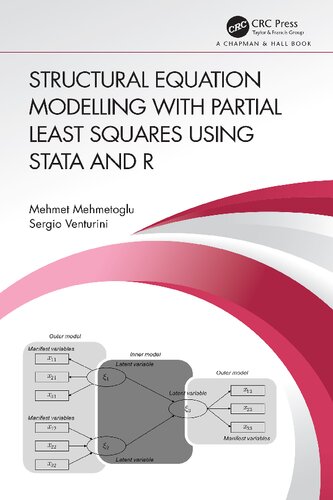

Most ebook files are in PDF format, so you can easily read them using various software such as Foxit Reader or directly on the Google Chrome browser.
Some ebook files are released by publishers in other formats such as .awz, .mobi, .epub, .fb2, etc. You may need to install specific software to read these formats on mobile/PC, such as Calibre.
Please read the tutorial at this link: https://ebookbell.com/faq
We offer FREE conversion to the popular formats you request; however, this may take some time. Therefore, right after payment, please email us, and we will try to provide the service as quickly as possible.
For some exceptional file formats or broken links (if any), please refrain from opening any disputes. Instead, email us first, and we will try to assist within a maximum of 6 hours.
EbookBell Team

0.0
0 reviewsPartial least squares structural equation modelling (PLS-SEM) is becoming a popular statistical framework in many fields and disciplines of the social sciences. The main reason for this popularity is that PLS-SEM can be used to estimate models including latent variables, observed variables, or a combination of these. The popularity of PLS-SEM is predicted to increase even more as a result of the development of new and more robust estimation approaches, such as consistent PLS-SEM. The traditional and modern estimation methods for PLS-SEM are now readily facilitated by both open-source and commercial software packages.
This book presents PLS-SEM as a useful practical statistical toolbox that can be used for estimating many different types of research models. In so doing, the authors provide the necessary technical prerequisites and theoretical treatment of various aspects of PLS-SEM prior to practical applications. What makes the book unique is the fact that it thoroughly explains and extensively uses comprehensive Stata (plssem) and R (cSEM and plspm) packages for carrying out PLS-SEM analysis. The book aims to help the reader understand the mechanics behind PLS-SEM as well as performing it for publication purposes.
Features:
The book is primarily aimed at researchers and graduate students from statistics, social science, psychology, and other disciplines. Technical details have been moved from the main body of the text into appendices, but it would be useful if the reader has a solid background in linear regression analysis.